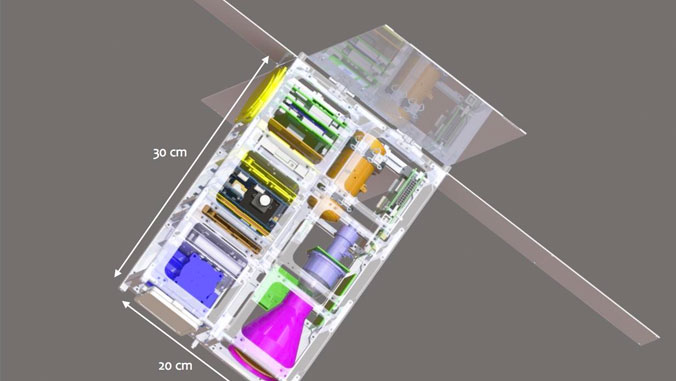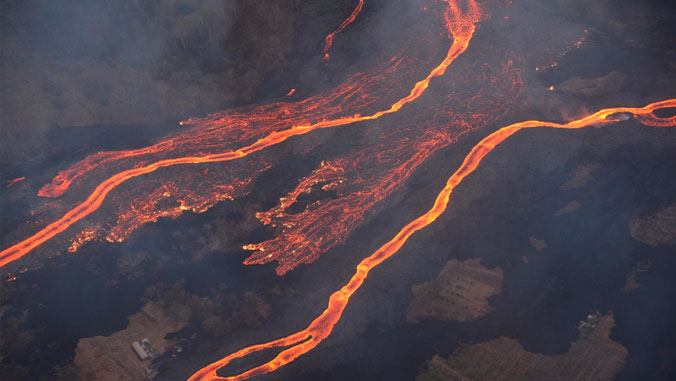
A satellite designed and developed by researchers and engineers at the University of Hawaiʻi at Mānoa is among 16 small research satellites from 10 states that NASA has selected to fly as auxiliary payloads aboard space missions planned to launch in the next three years.
In August 2018, the Hawaiʻi Institute of Geophysics and Planetology (HIGP) in the School of Ocean and Earth Science and Technology (SOEST) received $3.9 million from NASA in support of a two-year project to develop the Hyperspectral Thermal Imager (HyTI) CubeSat.
CubeSats, also known as nanosatellites, are small satellites intended for low Earth orbit that can explore a variety of scientific and technological questions. HIGP researchers, in collaboration with NASA’s Jet Propulsion Laboratory and several companies, will demonstrate with the HyTI CubeSat Mission how new technology, some of which was invented in HIGP, can be used to monitor water resources and volcanic hazards from space.
“HyTI represents an important interdisciplinary project involving HIGP instruments and science along with Hawaiʻi Space Flight Laboratory (HSFL) engineering support, all in a very small satellite format,” said Robert Wright, interim director of HIGP and principal investigator of the HyTI project.
Currently, 12 UH Mānoa team members, nine of whom earned degrees at UH Mānoa, are working to ready the HyTI for launch. Once in orbit, the satellite will scan Earth with specialized cameras and detectors that collect information about how much thermal radiation Earth’s surface and atmosphere emits at a variety of wavelengths. From this data, researchers will map irrigated and rain-fed cropland, and measure volcanic gases from space.
“This project is a highly collaborative effort, building on many previous federally funded projects in remote sensing, instrument development and small satellite technology that HIGP, HSFL and SOEST have executed in the past,” said Wright.

For the full story, see the SOEST website.
—By Marcie Grabowski

